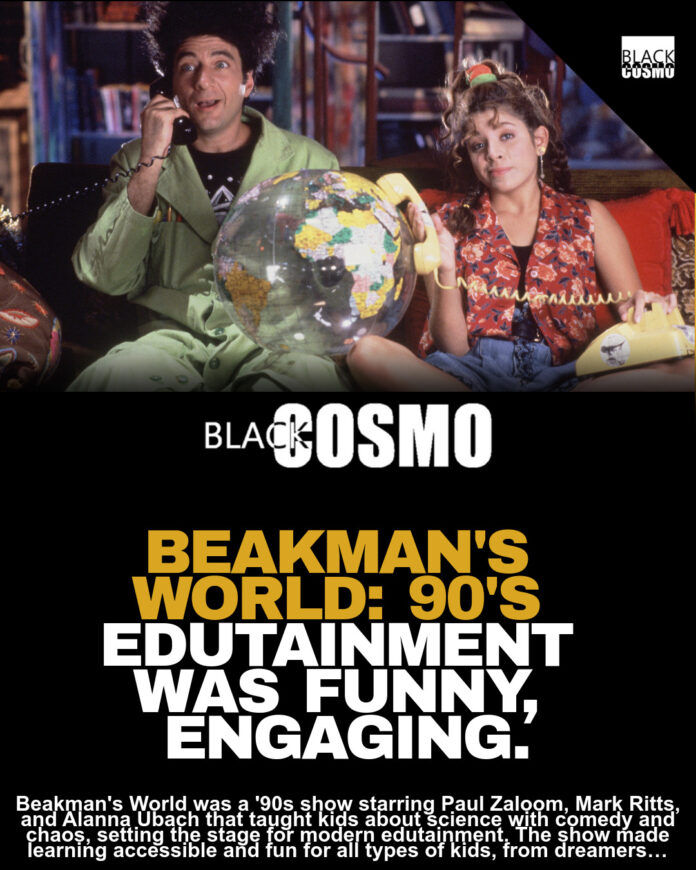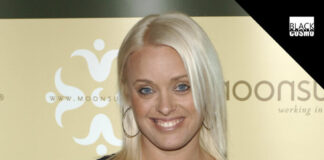Every now and then I just like to post random thoughts from my stream of consciousness on social media. I thought about how much I learned about science from this trio right here:
Minus the skeleton photographed in the image above (R to L), that trio consists of Beakman (Paul Zaloom), Lester (Mark Ritts) and Josie (Alanna Ubach). Let’s unpack the greatness that is Beakman’s World.
If you grew up in the ‘90s, your Saturday morning lineup wasn’t complete without a dash of chaos, a cloud of smoke, and one very excitable scientist yelling about static electricity. Beakman’s World was a full-blown sensory overload that made learning feel like a rock concert in a lab coat. From 1992 to 1997, Paul Zaloom’s wild-haired, caffeinated genius Beakman took over our TV screens and our imaginations, proving that science didn’t have to be sterile, it could be straight-up weird, funny, and cool.
Beakman was what would happen if you crossed Einstein with a Looney Tunes character. His manic energy, expressive face, and perpetual “aha!” moments made him one of the most memorable figures in educational TV. But behind the cartoonish delivery was a real passion for teaching. Zaloom wasn’t just performing, but he was also connecting. He met kids where they were, answering wild questions about the human body, the weather, and the mysteries of the universe with the kind of excitement that said, “Hey, science is for you, too.”
Of course, Beakman didn’t run the lab solo. His sidekick Lester was an oversized, snarky lab rat in a full costume (played by Mark Ritts). He was pure comedic gold. Lester was lazy, skeptical, and always had a quip ready, balancing Beakman’s hyper energy perfectly.
And then there was Josie, played by the multitalented Alanna Ubach. She was my personal fave of the trio. Long before she became Elle Woods’ bestie in Legally Blonde, voiced Mama Imelda in Coco, or brought fierce attitude to Euphoria, Ubach was matching Zaloom’s energy beat for beat in a world of green screens and bubbling beakers. Josie wasn’t the stereotypical “assistant”. She was curious, confident, and effortlessly funny. You could tell even then that Ubach was a star. She gave Beakman’s World heart and balance, grounding the chaos with genuine curiosity and the kind of charisma that’s carried her across decades in Hollywood. Sadly, she left the show after season 1 and I’ll be honest and say the show didn’t have quite the same luster and charisma without her presence. Liza, played by Eliza Schneider came in seasons 2 and 3. And Phoebe, played by Senta Moses came in season 4.
Beakman made slime, recreated tornadoes, and answered questions kids actually cared about (“Why do boogers exist?” was totally fair game). There were no boring chalkboards or droning lectures. Just color, comedy, and chaos. Science became tactile, loud, and full of personality.
Every episode opened with Beakman answering real letters from real kids. He looked straight into the camera, inviting you into the experiment. In the pre-social-media ‘90s, that direct engagement was revolutionary. Beakman made you feel seen like your questions mattered, no matter how silly they seemed.
The set design alone deserves its own award. Think neon greens, purple pipes, flashing lights, and enough visual noise to make MTV jealous. The editing was fast, the jokes were constant, and the vibe was pure Nickelodeon-era absurdity. It was science through the lens of sketch comedy and Saturday morning cartoons was a combo that worked perfectly for its time.
Looking back, Beakman’s World was basically YouTube science before YouTube existed. Fast cuts, visual gags, audience participation, and a mix of education with entertainment and it set the blueprint for how we consume “edutainment” today. Shows like MythBusters, Smarter Every Day, and all those TikTok science explainers owe a little something to Beakman’s chaotic brilliance.
Three decades later, Beakman’s World still holds up. It’s weird, it’s loud, and it’s joyful. The show made science accessible to every kind of kid. The dreamers, the nerds, the skeptics, and the ones who just liked to see stuff blow up.
Beakman’s World was about feeling the excitement of discovery. It taught us that curiosity is cool, asking “why” is powerful, and learning can (and should) be messy, funny, and full of surprises.
That’s why, even in a decade packed with great educational TV, Beakman’s World was truly engaging. The series is currently streaming on Tubi if you want to check it out!









